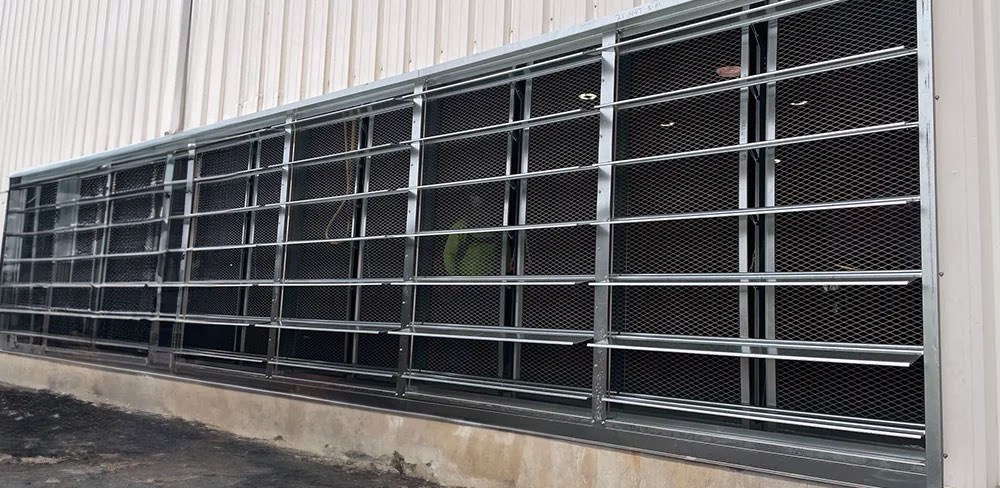Upgrading Ventilation Systems to Meet California’s Heat Safety Regulations
In case you haven’t already heard, California’s Heat Safety Regulations took effect earlier this year. These regulations require employers to take precautions to protect their workers from heat-related illnesses once the internal temperature reaches 82°F, including providing additional breaks with access to cooler temperatures. Both the extreme heat and the required extra cool down breaks can result in reduced productivity, quality, and worker safety.
Who Does the New California Heat Safety Regulations Affect?
While there are a couple of exclusions, California’s Heat Safety Regulations apply to any indoor working environment with internal temperatures above 82°F. In some industries, it’s not uncommon for workplace temperatures to pass 100°F, especially in areas near a heat source. Generally speaking, the industries most affected by these new regulations include, but are not limited to:
- Warehouses
- Commercial Kitchens
- Manufacturing Plants
- Forges and Metalworking Facilities
- Glassworks and Glass Manufacturing
Long-Term Solutions for a Growing Problem
The growing problem of rising temperatures is a global concern, and while World Governments work towards sustainable solutions, workers are taking the brunt of the heat. Every year these buildings get hotter and hotter, and the working conditions get harder and harder. California’s Heat Safety Regulations provide clear examples of actions employers must take to protect their workers in high-temperature environments. However, these actions will unfortunately lead to costly downtime and won’t be sustainable in the long term. Upgrading your industrial ventilation system is the long-term solution to this growing problem, with some systems helping to reduce internal temperatures by up to 30°.

Upgrading Ventilation Systems
Depending on each building’s unique layout, construction material, and environmental conditions, upgrading ventilation systems can drastically improve worker comfort and prevent unnecessary production delays. Due to the number of complex factors, a unique ventilation system should be designed for each distinct building. Most systems will likely require:
Ground-Level Air Intake Systems
Inadequate airflow can cause internal temperatures to rapidly increase, even if the building is already outfitted with roof vents. Specially designed industrial louvers allow a greater volume of air into the building, pushing the hot air up and out, resulting in a more comfortable working environment.
Roof Top Ventilation Systems
The most basic principle of thermodynamics is that hot air rises. If there is nowhere for that air to go, it will accumulate under the roof ultimately creating high internal temperatures. Industrial ventilation systems are designed for optimal air exchange, allowing the air to escape and drawing cooling air in from ground-level intake systems further pushing the hot air out.
The Time To Become Compliant is Now
California’s Heat Safety Regulations are already in place, affecting thousands of California-based businesses. California isn’t the only state to put worker safety first and instigate internal temperature policies, some more strict than others. Here at Moffitt, we understand the vital importance of becoming compliant with these new regulations and offer free onsite ventilation evaluations and designs. Our highly experienced ventilation experts strive to arrive within 48 hours to thoroughly inspect our client’s current systems to allow us to design and manufacture the ideal solution.
Don’t wait! Contact Moffitt to schedule your free consultation today!
Recent Posts
- Maximizing Industrial Efficiency: The Role of a Ventilation Exhaust Fan in Industrial Facilities
- Reducing the Impact of Tariffs on Industrial Ventilation
- Conquering Corrugated Heat in Arizona with Custom Plant Ventilation Solutions
- Elevate the Game in 2025 – A Note from John Moffitt.
- 6 Signs That It’s Time to Upgrade Your Industrial Ventilation
Categories
- CFD Modeling (17)
- Commercial Ventilation (28)
- Cost Savings (28)
- Energy Savings (36)
- Evaporative Cooling (12)
- Green Ventilation (25)
- Heating (16)
- Hybrid Ventilation (7)
- Industrial Ventilation (108)
- Installation (32)
- Lunch & Learn (21)
- Maintenance (22)
- Manufacturing (14)
- Moffitt (37)
- Natural Cooling (16)
- Natural Daylighting (8)
- Natural Smoke Relief (9)
- Natural Solutions (47)
- Natural Ventilation (97)
- Natural Ventilator Maintenance (4)
- Powered Ventilation (44)
- Pressure Gravity System® (10)
- Product Comparison (13)
- Safety (22)
- Science (33)
- Testimonial (11)
- Wall Louvers (13)
